Khawla SAIDOUNI
Batna-2 University, Batna, Algeria
Prof. Amel BAHLOUL
Batna-2 University, Batna, Algeria
لقد أصبحت الأجهزة المحمولة الذكية ذات أهمية كبيرة في حياتنا اليومية. هذه الأجهزة إلى جانب تطبيقات الإنترنت غيرت أسلوب حياتنا بشكل عام وأسلوب التعلم و التعليم على وجه الخصوص. وبالتالي فتعلم اللغة من خلال التكنولوجيا المحمولة ادت الى ظهور نهج جديد في تعلم اللغات. وعلى هذا الاساس، تسعى الدراسة الحالية إلى التحقيق في ممارسات التعلم باستعمال التكنولوجية الحديثة مثل الهواتف النقالة الذكية و اللوحات الإلكترونية بين طلبة و أساتذة اللغة الإنجليزية، كما تهدف الدراسة الى معرفة مدى استعداد كل من الطلبة و الاساتذة في قابلية دمج الاجهزة المحمولة في تعليم وتعلم اللغة الإنجليزية كلغة أجنبية. ولذلك، فإن الدراسة قيد البحث تلتزم بالطريقة البحثية الاستكشافية، والتي هي مزيج من البيانات الكمية والنوعية. وفي هذا الصدد، لجمع البيانات المطلوبة قمنا بتوزيع استبيان بطريقة عشوائية على 100 طالب، وخمسة عشر (15) أستاذ بقسم اللغة والادب الانجليزي في جامعة باتنة 2. وكشفت نتائج الدراسة أن الطلبة لهم مهارات عدة في كيفية استخدام الأجهزة النقالة، ويعتقدون أن الأجهزة النقالة يمكن استخدامها لتعلم اللغة الإنجليزية. فضلا عن ذلك، فهم يرحبون بإدماجها في دروس اللغة الإنجليزية. وفيما يتعلق بالأساتذة، فهم لم يبدو رغبة قوية في اعتماد هذه التكنولوجيات في سياق التعليم والتعلم في اللغة الإنجليزية كلغة أجنبية
الكلمات المفتاحية: الاساتذة والطلبة، التعليم العالي، الاجهزة المحمولة، الممارسات والاستعداد
Introduction
Recent advancements of technology coupled with knowledge explosion have had a great impact on the different aspects of life including the way of teaching and learning. Along this vein, handheld devices become pervasive tools among people, mainly students, due to the numerous practical features and distinguished affordances and ease of access to all materials and resources. In fact, Mobile devices have an immense impact on university life, they have transformed not only students’ way of communication and interaction patterns but also teaching and learning processes. Mobile learning, then, is one of the major developing areas in the educational field. Mobile technologies are considered as significant aids to language learning and teaching offer numerous practical uses in language learning. Along this vein, a new approach of language learning and teaching appeared known as mobile-assisted language learning or MALL in short. The main objective of this study is twofold: (a) to find out how EFL students and teachers use their smart devices and (b to explore their readiness to adopt MALL in the educational context. This study seeks to address the following questions:
How do students and teachers use mobile technologies in general and in learning and teaching English in particular?
Are EFL students and teachers ready to integrate MALL in the educational field?
Literature Review
Mobile-Assisted Language Learning
Traxler defines mobile learning as “Any educational delivery where the sole or prevailing technologies are handheld or palmtop devices” (Traxler. P, 2005:262). Georgiev, Georgieva and Smrikarov describes mobile learning as “The ability to learn anywhere at anytime without permanent physical connection to cable networks” (Georgiev, Georgieva and Smrikarov. P, 2004: 28). Ally claim that mobile learning refers to “The process of using a mobile device to access and study learning materials and to communicate with fellow students, instructors or institution” (Ally. P, 2009: 58). In this respect, mobile learning refer to the use of mobile devices as educational tool to access learning materials at anytime and every where.
The proliferation of mobile technologies generates a new approach related to the field of language learning and teaching known as mobile-assisted language learning or MALL in short. Kukulska-Hulme and Shield postulate that “MALL differs from computer-assisted language learning in its use of personal, portable devices that enable new ways of learning, emphasising continuity or spontaneity of access and interaction across different contexts of use” (Kukulska-Hulme and Shield. P, 2008: 273). Palalas states that “Mobile-assisted language learning (MALL) can augment second language teaching and learning by taking it into the real world” (Palalas. P, 2011:71). Miangah and Nezarat “MALL deals with the use of mobile technology in language learning. Students do not always have to study a second language in a classroom. They may have the opportunity to learn it using mobile devices when they desire and where they are” (Miangah and Nezarat. P, 2012, 313).
There is a rapidly growing literature on the area of mobile learning which indicates the increasing use of mobile technologies for learning and teaching practices. Stockwell and Hubbard posit that “Research has for the most part shed a very positive light on the potential of the role that mobile devices may play” (Stockwell and Hubbard. P, 2013:2). Stockwell and Hubbard go on to claim that “Mobile-assisted language learning is quickly to securing its place in language learning contexts, and the availability of the powerful tools that learners possess makes it an attractive supplement to other forms of teaching and learning a second language” (Stockwell and Hubbard. P, 2013:11).
Readiness of MALL
A number of studies have been conducted to explore students and teachers’ readiness of using m-learning. As pointed out by Schreurs, Ehler and Moreau readiness also takes account of students’ capability to adapt to “…technological challenges, collaborative training and synchronous as well as asynchronous self paced training” (Schreurs, Ehler and Moreau. P, 2008:3).
In a study conducted by Eltayeb and Hegazi on “Mobile Learning Aspects and Readiness” the findings show that “mobile technologies are ready and available for implementing m-learning, and there is a considerable readiness from the peoples to used mobile in learning”( Eltayeb and Hegazi. P, 2014, 26). Similar to the learners it is also important for the teachers to have the readiness for m-learning to impart knowledge pedagogically. Miglani and Awadhiya (2017) examined the m-learning readiness and perception of the teachers of eighteen Open Universities spread across five Commonwealth Asian countries (Bangladesh, India, Malaysia, Pakistan and Sri Lanka). The study indicated that “Teachers have the device and skill readiness to impart m-learning. The study also revealed the presence of positive perceptions for mlearning among them. They affirmed that m-learning has the potential to engage the learner to a greater extent.” (Miglani and Awadhiya. P, 2017: 62). However, some researchers found a low level of mobile learning readiness among teachers (Ismail, Bokhare, Azizan and Azman, 2013)
Readiness to the use of mobile phone in teaching and learning at the department of English language and literature at Batna-2 university is the focus of this paper.
Methodological Design
Method
To explore the students and teachers practices of mobile devices and readiness to adopt mobile devices in language learning, we adhered to the exploratory descriptive research. Accordingly, we opted for both quantitative and qualitative methods.
Population and Sampling
The target population of this study consists both EFL teachers and undergraduate students at Batna-2 University. Since it is impossible to conduct a research on the whole population of undergraduate students, we selected 100 EFL randomly from the department of English language and Literature at Batna-2 university. As far as teacher are concerned, fifteen (15) EFL teachers are involved in this study.
Instruments
A survey method was adopted in order to collect the data required for the study. To investigate the research questions, we designed two questionnaires administered to 100 students and 15 teachers. From100 students’ questionnaire, only 86 are returned back. The main endeavor behind this questionnaire is to gather data to answer the research questions.
Results and Analysis
Statistical Package for the Social Science (SPSS Version 20) was used for analysis and to calculate the frequencies of the participants’ responses. The results of the study are presented in two parts in answering the two research questions. In answering Research Question 1 “How do students and teachers use mobile technologies in general and in learning and teaching English in particular?” The second part of the survey seeks answers for the second research question: “Are EFL students and teachers ready to integrate MALL in the educational field?”.
Analysis of the Students Questionnaire
Item one: Students’ Age and Gender
Figure one indicates that out of 86respondents, 11.07 % (n = 10) were male, while 88.93% (n = 76) were female. The results, in figure two, show that 84.88% (n= 73) of the participants’ ages were between 18-21 years old. Nine students (10.46% ) of the targeted population were between 22-25, and the remaining four students (4.65%) their ages ranges between 26-29 years old.
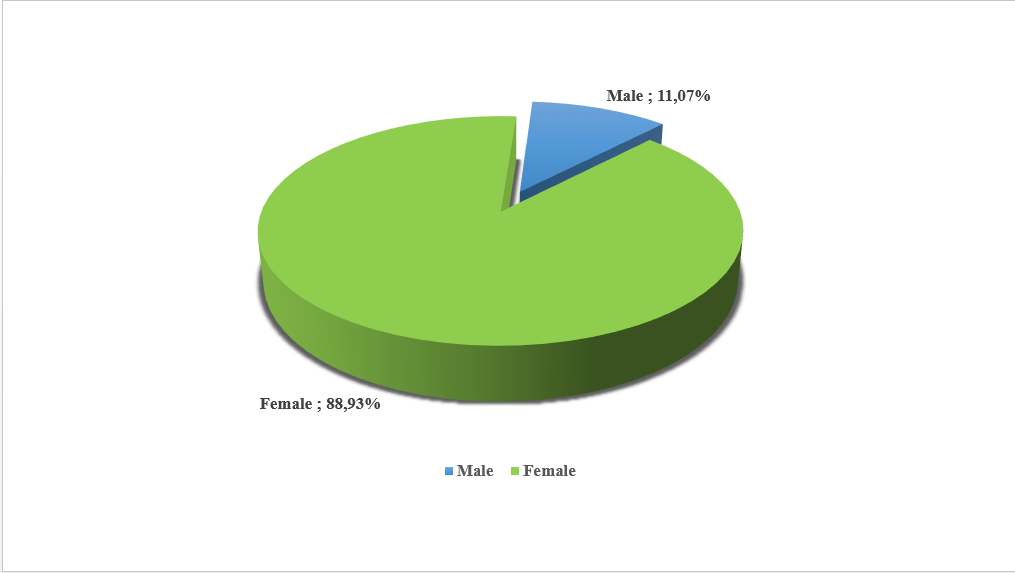
Figure 1. Students’ Gender
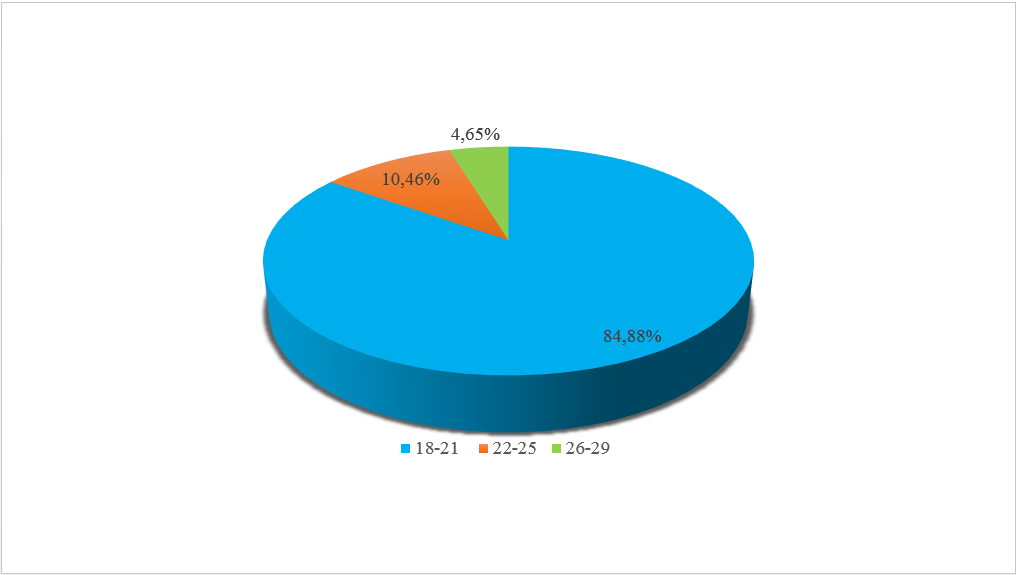
Figure 2. Students’ Age Range
Item two: Students’ ownership of Mobile Devices
As far as students’ ownership of mobile devices is concerned, the results show that all the participants own at least one mobile device, and some of them possess more than one device. The detailed analysis presented in figure 3 shows that the majority of the participants have smart phones (83.72%). In the second rank comes Tablet or IPad with 6.97 %. Other participants indicate that they have either a smart phone and tablet (3.48 %), or a smart phone and digital media player (2.32 %). Also, three participants (3.48%) out of 86 possessed an ordinary phone. According to the above findings smart phone is pervasive among students which has many capacities and features that can be used for entertainment or learning.
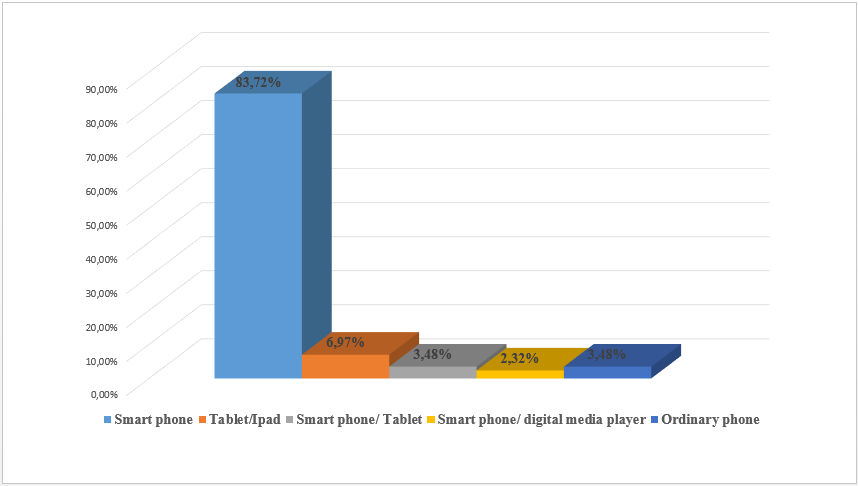
Figure 3. Types of Mobile Devices Owned by Students
Item three: How do you use your mobile devices?
The students’ answers about the different practices of mobile technologies are classified into three categories: social, entertainment, learning purposes, and others as shown in table 1.

Table 1: Students’ Uses of Mobile Devices
From the data about the various activities carried out using mobile devices, the results reflect what was expected. Almost all the students 98.83% use their devices to make and receive phone calls. Also, a significant number of participants reported that they use them for sending messages 81.39%, making video calls 24.41% ,and chatting in social networks 94.18%.
Some of the participants 32.55% indicate that they check and send emails from their mobiles. Additionally, the majority of students use mobile technologies for entertainment purposes like playing games 69.76%, listening to music 83.72 %, watching videos 59.30%, create and edit videos 23.25% taking pictures 95.94%, and browsing social networks 93.02%.
Other activities carried out by participants for learning purposes are: recording lectures 51.16%, surfing the internet to search for information 69.76%, downloading learning applications, checking dictionaries 81.39 %, reading eBooks 23.25%, using google translation 53.48%, creating learning groups on social networks 40.69% , downloading learning materials 52.32% and uploading and sharing learning materials with friends 44.18%.
The table further indicates that respondents performed other activities like setting a reminder 32.55%, checking calendar 27.90%, and using alarm clock 66.27%. Surprisingly, a considerable number of students 34.88% confess that they exploit these devices to cheat in exams.
In this regard, this net generation is acquainted and comfortable with the latest development of mobile technologies. Therefore, they have skill readiness to engage in MALL activities.
Item four: Students Readiness of using mobile devices for learning purposes
As table 2 illustrated, the majority of participants would like to learn at anytime and anywhere (strongly agree: 24.14%, agree 56.97%) while some of the participants remain neutral 9.30%. Only few participants do not support the idea of learning on the move (disagree 5.18%, strongly disagree 3.48%). In addition, as seen in the table, the participants agreed (strongly agree 51.16%, agree 30.23%) that they can use mobile technologies in order to facilitate communication and exchange ideas with colleagues and students. A high percentage of students, about 86% (strongly agree 34.88%, agree52.32%) who approve that they are ready to receive assignments from their teachers; however, a low percentage of participants indicate their neutralization, 2.32% disagree, and three participants (3.48%) do not provide answer. Moreover, the majority of the participants, about 91%, believe that traditional way of teaching and learning will be effective if it is reinforced by mobile devices. In addition, a high percentage of respondents, about 91% express their ability on using handheld devices skillfully. It is clear from the table that a significant percentage of students, about 88% think that handheld devices make interaction easier while 8.13% give a neutral point of view. As far as learning application is concerned, a significant number of responses about 78% show their agreement of installing learning application. In addition, the majority of the respondents strongly agree 50% and agree 41.86% with the idea that learning can be facilitated by integrating their own mobile technologies. Additionally, the majority of students, about 91%, approve that the pervasive of mobile technologies may facilitate learning. More importantly, almost all the participants show their readiness to use mobile technologies in order to enhance language skills.
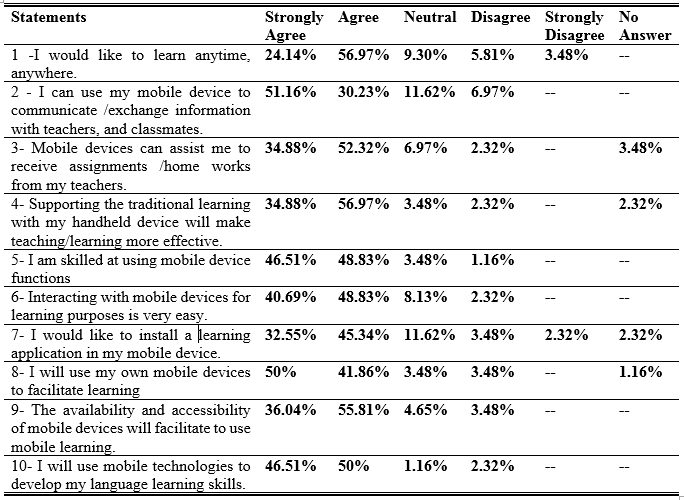
Table 2: Students’ Readiness of Using Mobile Devices for Learning Purposes
Analysis of Teachers Questionnaire
Because the perspectives of teachers are significant source of data, teachers’ questionnaire provides more depth and some extra aspects of teachers’ practices and readiness of adopting mobile devices. The following is the analysis of the data collected from teachers’ questionnaire.
Item one: Teachers’ Age and Gender
Figure 4 reveals that fifteen teachers were involved in this study; nine teachers (60%) were female and six teachers (40%) were male. The findings in figure 5 reveal that there are five (05) age groups. In the first group, the teachers’ ages vary between 30-39% which represent 33.33% of the whole sample. We have recorded 20% who are between 40-49 years old and 6.67% are between 50-59 years old. Also, two teachers (13.33%) who are 60-69 years old. However, four teachers (26.67%) provide no answer.

Figure 4. Teachers Gender
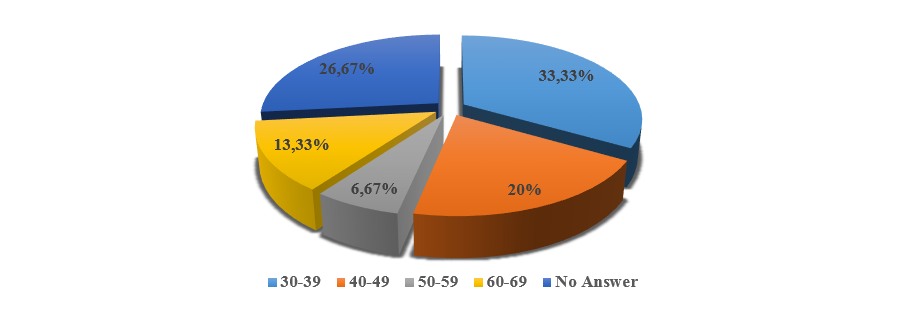
Figure 5. Teachers Age
Item three: Teachers’ Ownership of Mobile Devices
Among the 15 teachers, all of them own mobile devices. As shown in figure 5, 60% of participants own smartphone, 33.33% have smart phone and tablet, and only one teacher who have an ordinary phone and tablet. The findings also indicate that no one of the participants possess a digital media player.
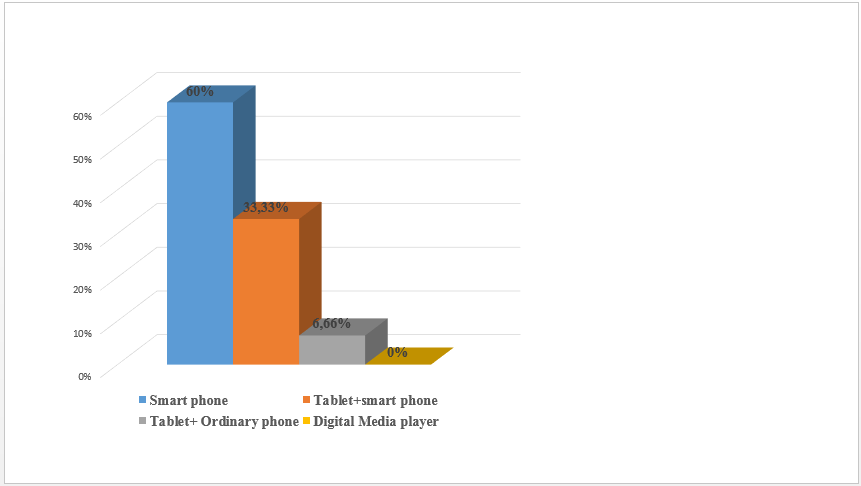
Figure 6: Teachers’ ownership of mobile devices
Item four: How do you use your mobile devices?
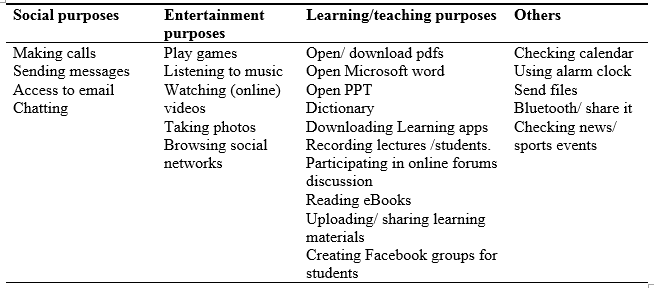
Table 3: Teachers’ uses of mobile devices
As shown in table 3, the most common activities performed by the teachers are making calls 100%, sending messages 80%, sending and receiving emails 93.33%. Also, less than a half of participants 33.33% chat by using their smart devices to keep in touch with educators.
As students, the use of mobile devices for entertainment purposes is also reported by teachers. The majority of participants use their devices to watch videos, 53.33%, listen to music, and take photos 73.33%. A few percentage of teachers, about 13.33%, who use their devices to play games, as well as 26.66% of participants indicate their access to social networks.
As illustrated by table 3, teachers’ usage of mobile devices is also devoted to learning and teaching purposes. Respondents exploit their devices to open pdf 66.66%, Microsoft word 33.33%, power point 20%. A significant number of participants read eBooks 60%, and check dictionary 80%. Similarly, 46.66% of respondents download learning apps, 40% create learning groups in social networks, and upload learning materials 53.33%. Moreover, only two participants 13.33% who engage in online forum discussion.
Further activities carried out by teachers are checking calendar 46.66%, setting alarm clock 33.33%, sending files through Bluetooth 20%, and checking news/sports events 26.66%.
Item five: Teachers’ Readiness of using mobile devices for learning and teaching purposes
Table three (3) shows that more than a half of participants, about 53%, believe that mobile technologies they will use mobile technologies to support class activities. However, 30% of responses choose neither to agree nor to disagree. Additionally, almost all the teachers (strongly agree 26.66%, agree 60%) approve the idea that mobile devices sustain anytime and anywhere learning while two teachers disagree with the idea. Interestingly, all teachers strongly, agree 33.33% and agree 66.66, favor the idea that mobile devices can bring them in touch with their students and colleagues outside classroom. As the findings in table two illustrate, about 73% of respondents indicate that they can use mobile devices skillfully; however, the rest four teachers 26.66% show their disagreement with the idea. Additionally, a significant number of participants (strongly agree 46.66% and agree 33.33%) believe that traditional learning will be more effective with the integration of mobile technologies. Yet, one teacher indicates his neutral position and two teachers disagree with the possibility of using mobile technologies in traditional learning. As far as learning applications are concerned, all teachers 100% (Strongly agree 66.66% and agree 33.33%) show their readiness to exploit learning applications in mobile devices. Furthermore, there were a remarkable percentage, around 73% of respondents who think that mobile technologies will make the job easier as they are accessible and available. Moreover, the majority of teachers confirm that they will use their own devices for teaching purposes; still two participants take a neutral orientation. As depicted in the table, less than a half of participants 33.33% show their willingness to use mobile technologies in teaching process. However, a significant number of teachers, 46.66 % took a neutral position, and 20% who disagree with the idea.
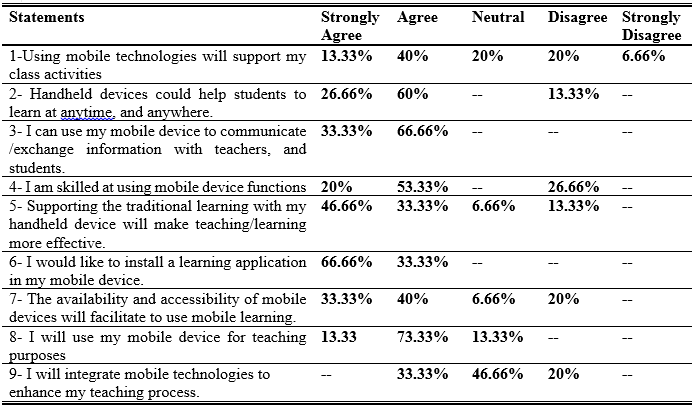
Table 4: Teachers’ Readiness of using mobile devices for learning and teaching purposes
Discussion of findings
This paper investigated the practices and readiness of the students and teachers of English at Batna-2 University to use mobile devices in teaching and learning.
The analysis of the data shows that students are actively using mobile technologies such as smartphones and tablet for different purposes. Similarly, the analysis showed that all the teachers who participated in the study owned mobile technologies such as smart phone and tablets, and they use them in their daily life for different purposes. Moreover, both students and teachers use handheld devices to support and facilitate learning/ teaching processes. Surprisingly, 34.88% of students confess that mobile devices are helpful tools for cheating in exams. The ownership of mobile devices and the ability to manipulate the latest devices easily show that both teachers and students are familiar with the devices. In this respect, it is worth noting that they are ready indirectly to use them in the educational field, mainly in EFL teaching and learning.
In terms of determining students and teachers’ readiness to use mobile-assisted language learning, the results indicate that students of English who have participated in this research show high level of readiness and enthusiasm towards the adoption of mobile devices as an innovative tool which can actively engage them in enhancing language skills. The informants show their readiness to learn anytime and anywhere, interact and share information, receive assignments…etc. Even though, teachers indicate that mobile technologies are significant in making teaching and learning easier, they do not show strong willingness to implement them in classroom activities in order to enhance language-learning skills. This is may be due to the lack of infrastructure such as Wi-Fi in our university.
More importantly, the findings also show that both students and teachers demonstrate their eagerness to adapt their own mobile devices for language learning. In this respect, we may adopt Bring Your Own Device (BYOD) model. Additionally, the study shows that students and teachers are technologically, and competently ready for the use of mobile technologies in learning and teaching context. This gives the English language teacher the opportunity to blend the use of mobile technology with their traditional teaching. This might help educators to create a new learning environment and give them the opportunity to design new activities, and methods of learning and teaching.
In this context, Stockwell and Hubbard “It is crucial, however, for learners, teachers, policymakers, and employers to be keenly aware of the physical, pedagogical, and psycho-social issues involved in successful implementation of MALL”( Stockwell and Hubbard. P, 2013: 11).
Conclusion
The recent advances of mobile and wireless technologies have opened new visions into the fields of learning and teaching. MALL is one of the effective approaches that try to support e-learning features in general and enhancing language teaching and learning with the help of mobile technologies. In this regard, mobile-assisted language learning has a significant influence on classroom environment, and curriculum design. However, educators have to find ways on how to best integrate MALL in the EFL classrooms.
References
Ally, M. (2009). Mobile Learning: Transforming the delivery of education and training. Athabasca University: AU Press.
Eltayeb,H. M., & Hegazi,M.O.A. (2014) Mobile Learning Aspects and Readiness. International Journal of Computer Applications (11).
Georgiev, T., Geirgieva, E., & Smrikarov, A. (2004). M-learning – A new stage of e-learning. Re-trieved December 4, 2011, from http://ecet.ecs.ru.acad.bg/cst04/Docs/sIV/428.pdf
Ismail, I., Bokhare, S., Azizan, S. & Azman, N. Teaching via Mobile Phone: a Case Study on Malaysian Teachers’ Technology Acceptance and Readiness. Journal of Educators Online, 10 (1), 1-38.
Kukulska-Hulme, A., & Shield, L. (2008). An overview of mobile assisted language learning: From content delivery to supported collaboration and interaction. ReCALL, (20), 271-289.
Miangah.T.,M., & Nezarat.A., (2012) Mobile-Assisted Language Learning International Journal of Distributed and Parallel Systems (3), No.1.
Miglani,A., & Ashish Kumar Awadhiya,A.,K., (2017) Mobile Learning: Readiness and Perceptions of Teachers of Open Universities of Commonwealth Asia. Journal of Learning for Development (4), 58-71
Palalas, A. (2011). Mobile-assisted language learning: Designing for your students. In S. Thouësny & L. Bradley (Eds.), Second language teaching and learning with technology: views of emergent researchers (pp. 71-94). Dublin: Research-publishing.net.
Schreurs, J., Ehler, U., & Moreau, R. (2008). Measuring e-learning readiness. Retrieved December 28, 2010 from http://www.uhdspace.uhasselt.be/dspace/bitstream/ 1942/8740/1/icl08.pdf.
Stockwell, G., & Hubbard, P. (2013). Some emerging principles for mobile-assisted language learning. Monterey, CA: The International Research Foundation for English Language Education.
Traxler, J. (2005). Defining Mobile Learning. IADIS International Conference on Mobile Learning. Malta. 261-266.
